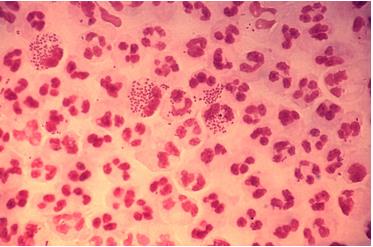Relying on several years of experience in the manufacture of antibodies, the excellent scientists at Creative Biolabs can provide our customers with complete, one-stop services.
What is Gonorrhea?
When engaging in oral, vaginal, and anal sex with an infected individual, the bacteria Neisseria gonorrhoeae (N. gonorrhoeae) can infect a healthy man and cause gonorrhea. Gonorrhea affects 0.8% of women and 0.6% of men globally. The bulk of infected individuals, unfortunately, do not exhibit any symptoms. Gonorrhea can spread to joints or heart valves if untreated, making the situation worse. This bacterium can also be transmitted to the unborn child from the mother.
After contracting the infection, men commonly report testicles pain as well as a burning sensation when urinating, while infected women may experience vaginal bleeding and pelvic pain in between periods. Usually, urine, male urethra, or female cervix tests are used to make the diagnosis. The greatest prevention methods for gonorrhea are using condoms, restricting sexual activity to one partner who is not infected, and refraining from having intercourse at all. Oral azithromycin and intravenous ceftriaxone are frequently employed to treat gonorrhea.
What Causes Gonorrhea?
In 1879, Albert Neisser isolated N. gonorrhoeae, often known as gonococcus or gonococci. N. gonorrhoeae is the causative agent of gonorrhea. The 2.1 Mb-sized genomes of various N. gonorrhoeae strains include 2,100–2,600 proteins. Neisseria species are gram-negative cocci and obligate aerobes which need oxygen to grow.
Lipooligosaccharides, outer membrane proteins with a wide range of functions, and hair-like pili are all present on the surface of N. gonorrhoeae. The endotoxin of lipooligosaccharide triggers an immune reaction. Opa proteins are surface proteins that can interact with the immunological response-suppressing receptors on immune cells. DNA transfer, movement, and adhesion are greatly aided by the pili. To penetrate the host, the bacteria use the pili to adhere to and puncture mucosal surfaces.
 Fig.1 Gram stain of the bacteria N. gonorrhoeae. (Wikipedia)
Fig.1 Gram stain of the bacteria N. gonorrhoeae. (Wikipedia)
Antibody About Gonorrhea
Most frequently, N. gonorrhoeae infect mucosal surfaces. As an important GTPase for the survival of N. gonorrhoeae, the Obg protein is encoded by genomic NGO1990, which primarily binds to the big 50S ribosomal subunit and can be consistently produced during the infection of the human host. At the early logarithmic phase, the cellular levels of Obg reach a maximum and remain within the whole infection period. The anti-Obg antisera respond with a variety of current GC clinical isolates, highlighting how commonplace Obg is. These results highlight that Obg can be regarded as a therapeutic target that has the potential for the treatment of gonorrhea.
A well-known biotechnological organization, Creative Biolabs has a brilliant workforce of trained researchers and cutting-edge equipment. For all your questions about antibody production, please feel free to contact us for more details.
Other Antibody Products
- Zielke, R. A.; et al. The Neisseria gonorrhoeae Obg protein is an essential ribosome-associated GTPase and a potential drug target. BMC Microbiol. 2015, 15: 129.